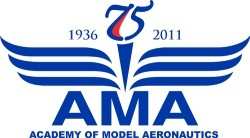Broad Array Of Industries, Manned And Unmanned Aviation Communities Come Together To Advocate For Regulatory Framework
The Academy of Model Aeronautics (AMA) and the Association for Unmanned Vehicle Systems International (AUVSI) joined 31 other organizations today to send a letter to the FAA encouraging the agency to expedite the rulemaking process for unmanned aircraft systems (UAS) operations in the U.S. airspace. The letter also calls on the FAA to allow the limited use of small UAS for commercial purposes before the final rulemaking is completed.

While Congress authorized the integration of UAS in 2012 and the FAA has recently implemented key steps in the integration process, the rulemaking for small UAS has been delayed for almost four years. Last month’s FAA v. Pirker decision underscores the immediate need for a safety structure and regulatory framework for small UAS, according to the co-signees. “The time for resolution has come, and we cannot afford any further delays. The technology is advancing faster than the regulations to govern it,” the letter states. “While the FAA has indicated its intention to appeal the Pirker decision to the full National Transportation Safety Board, we strongly encourage the FAA to simultaneously expedite its small UAS rulemaking and issue notice and public comment as soon as possible.”
The co-signees include a broad array of organizations and industries, from agriculture to real estate to photography, that recognize the benefits of UAS. Meanwhile, the effort represents the first time stakeholders from both the manned and unmanned aviation communities are coming together to press for a regulatory framework for UAS. The AOPA, GAMA and HAI are among the letter’s co-signees.

In addition to expediting the UAS rulemaking, the organizations urged the FAA to use its congressional authority to allow some limited UAS operations right away. “We recommend the FAA use all available means, including Section 333 of the FAA Modernization and Reform Act of 2012, to allow for some limited UAS operations, subject to the Secretary of Transportation’s safety determination, before the small UAS rule is finalized,” the letter states. “The current regulatory void has left American entrepreneurs and others either sitting on the sidelines or operating in the absence of appropriate safety guidelines. The recreational community has proven that community-based safety programming is effective in managing this level of activity, and we highly encourage the FAA to allow similar programming to be used to allow the small UAS industry to establish appropriate standards for safe operation. Doing so will allow a portion of the promising commercial sector to begin operating safely
and responsibly in the national airspace.”
“Community-based programming has a proven track record,” said AMA President Bob Brown. “The members of the Academy of Model Aeronautics have operated unmanned aircraft (model aircraft) in the national airspace for decades and have set the example for operating small unmanned aircraft systems in a safe and harmonious fashion. The Academy stands ready to lend its expertise and to assist the FAA in developing a safety structure that will enable and allow all small UAS to operate safely and responsibly in the national airspace” According to AUVSI’s economic impact study, the integration of UAS will create more than 100,000 new jobs and $82 billion in economic impact in the first decade following integration.

AUVSI President and CEO Michael Toscano noted the many societal benefits of UAS and the economic costs of any further delays. “UAS have enormous potential to benefit our lives,” Toscano said. ”This technology has the ability to transform that way many industries operate, whether helping farmers better survey their fields, assisting search and rescue missions or providing real estate agents with new vantage points. Delays in the rulemaking process have slowed the integration process, keeping these industries on the sidelines. Every year that integration is delayed, the United States loses more than $10 billion in potential economic impact. This translates to a loss of $27.6 million per day that UAS are not integrated.”
 ANN's Daily Aero-Linx (05.02.24)
ANN's Daily Aero-Linx (05.02.24) ANN's Daily Aero-Term (05.02.24): Touchdown Zone Lighting
ANN's Daily Aero-Term (05.02.24): Touchdown Zone Lighting Aero-News: Quote of the Day (05.02.24)
Aero-News: Quote of the Day (05.02.24) ANN FAQ: Contributing To Aero-TV
ANN FAQ: Contributing To Aero-TV NTSB Final Report: Cirrus Design Corp SR20
NTSB Final Report: Cirrus Design Corp SR20





